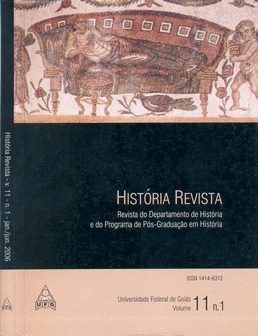SACRALITY AND MONARCHY IN TOLEDO'S KINGDOM (CENTURIES VI-VIII)
DOI:
https://doi.org/10.5216/hr.v11i1.9143Abstract
In a symbolic metaphorical reading of Recaredo's official conversion into Catholicism, in 589, it was established, through royal sacralization, an order with a normative and ethics basis. Thus, it was implicit a submission under all supra-natural elements which involved the king; the disobedience to them was also linked to supra-natural elements, but connected to the Christian concept of evil and sin. It was, thus, a disobedience to the divine norms. The creation of the Catholic monarchy of the Visigoth could be fit within what is called refundant origin, as in the face of the precariousness and instability due to the incipient "conversion" called for the ritual gesture or intended to create, with Recaredo, a mythological narrative not established as memory, but which determined a new situation.
KEY WORD: High Middles Ages, sacrality, monarchy, kingdom of Toledo.
Downloads
Downloads
Published
How to Cite
Issue
Section
License
Declaração de Direito Autoral
Concedo à História Revista o direito de primeira publicação da versão revisada do meu artigo, licenciado sob a Licença Creative Commons Attribution, que permite o compartilhamento do trabalho com reconhecimento da autoria e publicação inicial nesta revista.
Afirmo ainda que meu artigo não está sendo submetido a outra publicação e não foi publicado na íntegra em outro periódico, assumindo total responsabilidade por sua originalidade, podendo incidir sobre mim eventuais encargos decorrentes de reivindicação, por parte de terceiros, em relação à autoria do mesmo.



